Introducing the best albums of 2023.
- PoiL / Ueda : s/t (FR/JA) ****½
- Monika Roscher Bigband : Witchy Activities And The Maple Death (DE) ****½
- Jack O’ The Clock: Warm, Dark Circus (US) ****½
- Manna/Mirage : Autobiographie (US) ****½
- Amoeba Split : Quiet Euphoria (ES) ****½
- Oiapok : OisoLün (FR) ****½
- PoiL/Ueda : Yoshitsune (FR/JA) ****½
- John Zorn: Multiplicities II : A Repository Of Non-Existent Objects (US) ****½
- Fred Frith And Ensemble Musiques Nouvelles : Something About This Landscape For Ensemble (UK) ****
- Univers Zero : Lueur (BE) ****
- John Zorn : Homenaje a Remedios Varo (US) ****
- Gong : Unending Ascending (UK) ****
- Porcupine Tree : Closure/Continuation.Live Amsterdam 07/11/22 (UK) ****
- Haralabos [Harry] Stafylakis: Calibrating Friction (US) ****
- John Zorn: Parrhesiastes (US) ****
- John Zorn : New Masada Quartet, Vol. 2 (US, 2023) ****
- John Greaves & Annie Barbazza : Earthly Powers (UK/IT) ****
- The Mercury Tree : Self Similar (US) ****
- Sonar : Three Movements (CH) ****
- John Zorn : The Fourth Way (US) ****
Read also: Peter Gabriel – i/o (2023)
1. PoiL / Ueda: s/t

PoiL is a French progressive rock band formed in 2014 by trio Antoine Arnera (keyboards/vocals) Boris Cassone (bass/guitar/vocals) and Guilhem Meier (drums/percussion).
PoiL’s 2008 full-length debut L’ire des papes and 2011 EP Dins o Cuol blended jazz, punk and avant-garde progressive rock in a rather unheard-of way. The 2014 release Brossaklitt, which attracted a lot of attention in prog circles, highlighted the avant-prog side of the band in an almost brutal way and coated everything with a saucy sex-tinged humour.
The trio’s most recent album to date, Sus (2019), sung in Occitan, showed a new maturity and stripped the music of its most obvious humour, while still retaining the band’s fundamental mischievous nature. In addition to trio albums, the threesome, which is constantly exploring new directions, has also played in extended formations. Le Grand Sbam, which draws its inspiration from art music, has released two albums (Vaisseau Monde, 2019 and Furvent, 2020), while the math-rock band ni has released an album under the name PinioL (Bran Cou Cou, 2018). These two spin-off bands are an important part of the PoiL saga. Now a collaboration with Japanese artist Junko Ueda adds an important new chapter to the story…
2. Monika Roscher Bigband: Witchy Activities And The Maple Death

Witchy Activities And The Maple Death is the third studio album by Monika Roscher Bigband.
Monika Roscher from Germany studied jazz guitar and composition at the Munich Music Academy. She founded the Monika Roscher Bigband as part of her thesis in 2012. The band released its first album Failure in Wonderland the same year. Monika Roscher Bigband was, as the name suggests, built around a large big band style line-up. However, the band did not play typical big band jazz, but Roscher drew influences for her compositions from many directions besides jazz. His music is clearly influenced not only by the many different genres of jazz and progressive rock, but also by pop and electronica. The result often sounds, if not downright avant-garde, then at least relatively futuristic. It’s certainly not yesterday’s stale jazz…
3. Jack O’ The Clock: The Warm, Dark Circus

The Warm, Dark Circus is Jack O’ The Clock’s ninth studio album.
The American Jack O’ The Clock is probably one of the most closely guarded secrets of progressive rock over the last 20 years. Led by multi-instrumentalist Damon Waitkus (guitar, dulcimer, flute, etc.) and formed in 2007, the band has quietly released nine fine studio albums combining folk and prog, and one very powerful live album. Despite a quality and extensive catalogue, very few listeners, even those familiar with progressive rock, are aware of the band.
Jack O’ The Clock (henceforth JOTC) has at least gained some attention among the narrow following of the progressive rock subgenre avantprog. JOTC does fit reasonably well into that subgenre. The band’s music is at times very complex and avant-garde, but on the other hand, Waitkus’ compositions are also often considerably more accessible than the genre’s music in general. While avant-prog often draws mainly on influences from modern art music or avant-garde jazz, for Waitkus it is precisely American folk music that is a key tool alongside these influences. Instead of avant-prog, JOTC could be called americanaprog…
4. Manna/Mirage: Autobiographie
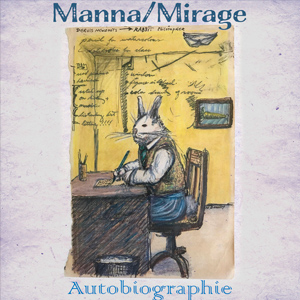
Autobiographie is Manna/Miragen’s fifth studio album.
I wrote in my review of Jack O’ The Clock’s latest album, The Warm, Dark Circus, that this band is one of the most closely guarded secrets of progressive rock of the last 20 years. The same platitude is also a good description of the American band Manna/Mirage. In the case of the project of multi-instrumentalist Dave Newhouse, who previously played in The Muffins, the time span can be reduced to the last ten years, as Manna/Mirage’s first album was released in 2015.
Manna/Miragen’s debut Blue Dogs was a sort of continuation of The Muffins. Since then, Newhouse has been joined by regulars; drummer Sean Rickman, multi-instrumentalist (trombone, guitar, bass) Jerry King and guitarist Mark Stanley. Guy Segers from Univers Zero also usually plays bass on one or two of the album’s most sparkling songs. This time Segers plays on two tracks. However, it’s more of a project than a band and all the music is composed by Newhouse. On Autobiography, Newhouse, who plays winds, keyboards, kalimba and accordion, performs a few songs all by himself.
In less than a decade, Newhouse has released five great albums of instrumental progressive rock that balances somewhere between avant-prog and Canterbury. I recently saw an online commentator call the album easy-listening avantprog. It doesn’t sound particularly flattering, but that actually describes the music quite well. As long as you interpret the description in the most positive way possible! So, once again, Newhouse softens the angularity of avant-prog with pleasantly gentle Canterbury tones. The more complex passages are always accompanied by a tasty melodiousness. This does not mean, however, that the music is without edges. On the contrary. There is plenty of intensity and alongside the mid-tempo and gentle songs, there are moments of upbeat action, a good example of which is the opening track ”Phantosmia”, which is whipped forward with complex rhythms by Sean Rickman’s powerful drumming.
Alongside the intense ”Phantasmia”, particularly strong tracks include the minimalist-influenced ”Rounded By Sleep” which builds a fine hypnotic tapestry of horns and keyboards, and the charming klezmer-influenced ”Practicing Tonglin In A Time Of War” which weaves together a number of different melodic lines in a fascinating way.
Also the excitingly skittering ”Close The Sky” where Segers puts on an outright bass clinic, playing his instrument in a variety of styles is an interesting song. As well as Segers’ bass, the song is also enhanced by Rich O’Meara’s marimba rattling and Stanley’s boldly wandering electric guitar.
Autobiographie may not be quite as masterful as Manna/Mirage’s previous album Man Out Of Time (2021), but it’s not far off. It’s a shame that now that the project has been going strong in recent years, Newhouse has announced that Autobiographie will be Manna/Mirage’s last album. Apparently, Newhouse will continue to make music under his own name, so there should be quality anyway. Manna/Mirage is dead, long live Dave Newhouse!
Best tracks: ”Phantosmia”, ” Rounded by Sleep”, ”Practicing Tonglin In A Time Of War”, ”Close The Sky”
5. Amoeba Split: Quiet Euphoria
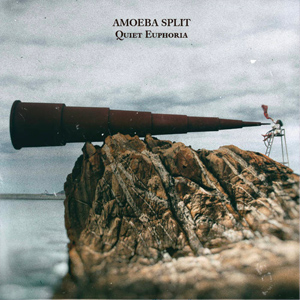
Quiet Euphoria is Amoeba Split’s third studio album.
Founded in 2001, Amoeba Split has been releasing albums slowly. The band’s debut Dance of the Goodbyes was not released until 2010, followed four years later by Second Split and then this third album, which was seven years in the making. Fortunately, Quiet Euphoria was worth the wait.
Canterbury is, of course, originally an English phenomenon, but as the third album by Spanish band Amoeba Split again shows, this playful combination of prog, jazz and pop has become a global phenomenon. On a small cult scale, of course, but still.
The Canterbury scene could be described in a very simplified way as a gentle combination of jazz and pop/rock. The mix varies depending on the band. For example, most incarnations of Soft Machine have leaned either heavily towards jazz or at least jazz-rock, and Caravan, for example, flirted distinctly with pop. Amoeba Split is clearly one of the jazzier end of the Canterbury bands, with an added twist that makes their music sound almost like big band jazz at times.
Amoeba Split is therefore operating with a large line-up. Quiet Euphoria has no less than eight musicians. In addition to the drummer and bassist/guitarist, there are two full-time keyboard players, as many as three wind players and a vibraphonist. The sound of the album is therefore delightfully rich and colourful.
The compositions are written by bassist/guitarist Alberto Villarroya López and arranged by Ricardo Castro Varela, one of the keyboard players.
In keeping with the Canterbury spirit, the moods remain mainly quite warm and melodic. Fortunately, there’s enough edge and angularity to keep things from getting stale. Especially the winds are sometimes playing together energetically and the music is powerful enough in other ways.
Of the individual instruments, the most delightful are Lopez’s brash, yet melodic, buzzing bass guitar, the beautifully ringing electric pianos and the vibraphone, which often plays counter-melodies on top of everything else. Drummer Fernando Lamas, who plays with a delightfully loose and relaxed touch, also does a good job of pushing the band forward. And let’s not forget the band’s three wind players. Especially in the greatest moments, the trio’s horns (with saxophones, trumpet and flugelhorn interspersed with a beautiful flute) play very well.
Quiet Euphoria, a tribute to old vinyl durations, lasts about 40 minutes and contains six tracks of 3-11 minutes. Composer López and arranger Varela dose the resources of a large band in a pleasant way. There is no full blown tooting all the time and the various instruments are brought to the fore so that the music remains interesting throughout. The compositions have an airy feel, but there are no empty moments. Something interesting is happening all the time and the music changes shape at a fast pace.
Stylistically, Quiet Euphoria is usually somewhere between jazz and progressive rock, but the album-closing 11-minute ”No Time For Lullabies” also brings in clear influences from classical music, especially with Varela’s strong pianism, but also contains the most avant-garde feel of the album.
In terms of overall production and sound choices, Quiet Euphoria could very well be from the early 70s, but it still manages to avoid the moldiest retro vibe. Quiet Euphoria sounds more timeless than retro.
I’m not very well acquainted with Amoeba Split’s first two albums, but at least for the moment I feel that Quiet Euphoria is the band’s strongest release so far. It is also one of the most powerful Canterbury-inspired albums of recent years. Hopefully we won’t have to wait long for Amoeba Split’s fourth album.
Parhaat biisit: ”Quiet Euphoria”, ”Shaping Shadows”, ”No Time For Lullabies”
6. Oiapok: OisoLün

OisoLün is Oiapok’s debut album.
The French band Oiapok seems to be a spin-off of Camembert, a band formed in 2005 that has made a couple of fine albums. Both bands feature composer/bassist Pierre Wawrzyniak and harpist Guillaume Gravelin.
OisoLün’s semi-acoustic approach blends folk, jazz and Canterbury influences in a joyfully eclectic way. The music is beautiful, playful, upbeat, but at times melancholic. Oiapok plays mostly with a rather light and airy touch, but the excellent rhythm section of Matthieu Lenormand (drums) and Wawrzyniak (bass guitar) add just the right amount of punch and edge.
Wawrzyniak’s excellent compositions are crowned by a rich instrumentation that allows for versatile arrangements. Alongside guitar, bass and drums, trombones, flutes, harp, vibraphone and xylophone play equally important roles. There are also some keyboards played by Paola Ske Botta from Ske and Not A Good Sign, who guests on five tracks. The two trombones’ chunky chugging brings with it almost orchestral tones at times. The trombone’s rumbling is often accompanied by a high-pitched xylophone or vibraphone. The warm and thickly pulsating bass guitar, well mixed to the surface, also delights in many passages.
Mélanie Gerber’s ethereal, playful vocals are mostly in French, but a few songs are also sung in English. French sounds better in Gerber’s mouth, but the English language vocals don’t sound bad either. In any case, the vocals play a rather minor role. Despite the fact that there are quite a lot of them. In the mix, the vocals are placed comfortably within the music, not on top of it as is typical in pop music. The vocals are just one instrument among others, not the main one.
Apart from the general Canterbury influences, Oiapok is also inspired by bands such as Aquaserge, Ske and Cos. The jazziest moments also bring to mind the Norwegian Jaga Jazzist. If you are into those bands, you should definitely give Oiapok a chance.
Amoeba Split’s Quiet Euphoria is this year’s Canterbury king, but Oiapok’s excellent debut is a very strong contender. Let’s hope there’s more to come! In fact, I wouldn’t mind at all if Wawrzyniak and co. concentrated on Oiapok instead of Camembert in the future.
Parhaat biisit: ”Summer 19”, “Les Grands Equipages de Lumière”, “Le Concierge”, ”Frogs Might Disappear”
7. PoiL/Ueda: Yoshitsune

Yoshitsune is Poil/Ueda’s second studio album.
French avant-prog band PoiL and Japanese traditional musician Junko Ueda released their first joint album in early March 2023. In November, just eight months after their untitled debut, PoiL/Ueda served up their second studio album Yoshitsune.
Surprising?
Not really, because the debut album was only 31 minutes long and at the PoiL/Ueda gig I saw in April (April Jazz in Espoo) the band played about half an hour of unreleased material. So presumably the debut and Yoshitsune were recorded in the same sessions and split into two separate albums, perhaps for financial reasons. Disgusting commercial calculations to squeeze the maximum amount of money out of eager fans? Well, you could see it that way, but considering how small the market is for this kind of niche music, I would personally see that pretty much any means are allowed.
On the other hand, it is also possible to see an artistically sensible angle in dividing the material into two discs. PoiL/Ueda’s music is very complex and very intense, and a whole hour at a time of that kind of blasting would probably have been an exhausting experience. This kind of music is at its best when dosed in moderation.
The music I heard at the concert, not yet released on a record at the time, sounded absolutely amazing so my expectations for PoiL/Ueda’s second album were sky high. However, for some reason that I can’t fully fathom, the material on the album hasn’t moved me as much as the songs on the debut album. Perhaps it’s partly because PoiL/Ueda’s original music no longer has the same explosive element of surprise as it did when the debut came out.
Stylistically, Yoshitsune is not radically different from the debut. Ueda chants Japanese lyrics with her satsuma-biwa crackling and creating an ancient atmosphere. Backing him, the four-piece quartet PoiL in turn pound out brutally intense and futuristic prog in tightly complex rhythms. The music is surprisingly groovy at times until the flow of the music is deliberately interrupted by some completely insane rhythmic or more ethereal section that brings Ueda’s vocals to the fore.
One difference I can think of compared to the debut is that PoiL’s vocals are heard a bit more alongside Ueda this time (especially the rhythmic exclamations of ”Kumo Part III” are an effective effect). Perhaps PoiL’s role is more pronounced this time anyway. The instrumental sections are longer and there is less singing in general. On the other hand, Ueda’s satsuma-biwa plays a more prominent role than before, especially in the first track, and Ueda gets one track all to herself.
All in all, Yoshitsune blends PoiL and Ueda more naturally, but on the other hand, the album doesn’t quite reach the same heights as the debut at its best.
It will be interesting to see if the cooperation between PoiL and Ueda will continue after Yoshitsune. Knowing PoiL’s penchant for constant changes of direction, I suspect that the next step will be something completely different. It’s a shame in a way, because the combination of PoiL’s modern avant-prog and Ueda’s ancient traditional music was something very unique. Personally, I wish that PoiL/Ueda would at least release a live album in the future, as the combination was particularly compelling on the concert stage. One thing is for sure; whatever PoiL does next will be worth listening to.
Best tracks: ”Kumo 1-3”, ”Omino-San”, ”Yoshino”
8. John Zorn: Multiplicities II: A Repository Of Non-Existent Objects

Multiplicities II: A Repository Of Non-Existent Objects is the second album by John Zorn’s Incerto quartet.
Zorn formed the acoustic quartet Incerton in 2022 when it released its debut album. Because Zorn’s pace is downright manic, Incerto released no less than three albums in 2023 alone! Zorn himself does not play in the band but acts as its composer, producer and leader. Incerto is made up of four talented musicians: Julian Lage (guitar), Brian Marsella (piano), Jorge Roeder (double bass) and Ches Smith (drums). The virtuoso guitarist Lage in particular seems to be a favourite of Zorn these days, as the guitarist plays in several of the maestro’s various ensembles.
Incerto is referred to as an acoustic quartet, but Lage actually plays electric guitar, but because he plays it with a very pure ”jazz guitar sound” the overall impression is still very acoustic.
Multiplicities II: A Repository Of Non-Existent Objects is the follow-up to the first Multiplicities album released in 2022, made by Zorn’s electronic band Chaos Magick. According to the press release, in December 2022 Zorn composed twenty ”musical aphorisms” inspired by the thoughts and writings of French philosopher Gilles Deleuze (1925-1995). Ten of these pieces were given to Chaos Magick and others a year later to Incerto. How does this manifest itself in music? Your guess is as good as mine, but the important thing is that the inspiration flows!
Incerto plays with pinpoint precision on this album, but always with a human liveliness. The quartet’s collaboration is very agile and Zorn’s music sounds airy in their hands, but also very sharp when necessary. Stylistically, the ten short (1-7 min.) songs on the album could be described as relatively light avant-garde jazz with a hint of chamber music.
Highlights of the consistently strong album include the furious and fast opening track ”X Is C” and ”Difference And Repetition” which initially showcases Zorn’s more lyrical side. However, the gentle mood is occasionally interrupted by aggressive staccato sections with a Zornian edge. The whole quartet are masters of their instruments. But it’s Lage’s soaring guitar playing and Smith’s hyperactively rolling drumming that really impresses, especially in the menacing opening section of ’Soothsayer’.
Multiplicities II is slightly more serene than its electric predecessor, but no less intense.
Best tracks: ”X Is C”, ”Difference And Reputation”, ”Soothsayer”
9. Fred Frith And Ensemble Musiques Nouvelles: Something About This Landscape For Ensemble

Fred Frith (b.1949) is mostly known not only for his numerous bands (Henry Cow, Art Bears, Massacre, Skeleton Crew, Cosa Brava…) but also for his wild and experimental improvisations. However, Frith is not only an improviser but also a very prolific composer, and although he is mainly self-taught, he is also able to operate in the ”serious” art music circles. In fact, despite his lack of formal academic training, Frith has also been a professor of composition at Mills College and elsewhere.
I am not deeply or extensively familiar with Frith’s repertoire of ”serious contemporary music”, but the 23-minute ”Something About This Landscape For Ensemble” for chamber orchestra seems to be one of his strongest works in this field. ”Something About This Landscape For Ensemble” was commissioned by the Belgian contemporary music festival Ars Musica and will be performed by a ten-piece ensemble from the same country as Frith…
10. Univers Zero: Lueur
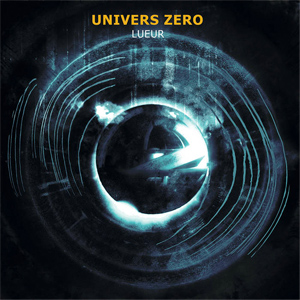
Lueur is Univers Zero’s 11th studio album.
Lueur is the first studio album in almost a decade from Univers Zero, formed in Belgium in 1974.
When rumours started circulating a few years ago that drummer/composer Daniel Denis (b.1952) was working on new music, it was uncertain whether that material would see the light of day in the form of a solo album or Univers Zero.
Listening to the album and looking at the list of contributors, it becomes clear that the original plan was to have Denis as a solo artist, which was eventually modified to fit the ”UZ-format” with a few guests. Commercial calculation? Not very Rock In Opposition! As a mitigating circumstance, however, we must remember that the sales figures of Univers Zero do not make for a life of luxury, and it may well be that the introduction of the brand was the only way to get this material heard by the people without taking a loss on the whole thing.
In the end, the essential question is: is Lueur’s music worthy of the name Univers Zero? The short answer is yes. But let’s go a little further.
All of the compositions are by Denis, but more revealingly, a significant number of the 11 tracks on the album are also his solo performances. Denis’ solo instrumentation is built around percussion, keyboards and, of course, drums.
The music, especially the one played by Denis alone, is for the most part much simpler than UZ’s music in general. Some of the material is downright minimalist.
In the first song, ”Migration vers le bas”, the percussion rattles and rattles like chains on the deck of a slave ship as the drum beats at a steady pace. The music hums, buzzes and chimes eerily. These more minimalist and at times downright industrial compositions on the album are enhanced by the quality recording work of Didier de Roos, who has worked with UZ for a long time. Univers Zero’s albums always sound good and Lueur is no exception. Lueur sounds full-bodied and dynamic.
The tracks played by Denis alone are quite successful ambient/industrial, but Lueur is at its best when he has other musicians playing alongside him. The few excellent ”band tracks” on the album make you wish you’d heard a bit more of that.
Old Univers Zero cohort Kurt Budé plays the wind instruments on a couple of songs and Nicolas Dechêne plays guitar on three tracks. Dechêne made his debut on UZ’s previous album Phosphorescent Dreams (2014).
However, the most notable collaborator on the album is Denis’ son Nicolas Denis who plays bass guitar on three tracks, percussion on one and sings on a couple of tracks. Denis’ first solo album Sirius And The Ghost (1991) is dedicated to his son Nicolas. I wonder if he was born around that time?
Indeed, Nicolas Denis’ vocals on the album’s longest track, the nine-minute ”Sfumato (Part 1)”, are Lueur’s biggest departure from the history of Univers Zero. It is the first time that Univers Zero has heard lyric vocals on an album. The younger Denis sings in a thin voice, sounding a bit like Robert Wyatt. The vocals don’t play a very big role, but still add an interesting side effect.
Some of the songs offer Denis’ familiar medieval music influences mixed with progressive rock. An example of this is ”Cloportes”, where Budé’s clarinets have a delightful interplay with Denis’ actively pounding drums. Not nearly all of Lueur’s songs showcase particularly virtuosic drumming, but here and there Denis proves that he still has a great command of the craft, despite being over 70 years old. Especially on ”Sfumato (Part 2)”, Denis’ insistent, belligerently rattling drumming is truly powerful to listen to.
By the standards of normal pop music, Lueur is a dark listen, but for Univers Zero music, it’s downright bright at times, which I think is the direction the album’s title ( shining, glow…) refers to. Throughout the album, I have even noticed a kind of dramatic arc; Lueur’s music seems to move quite steadily from the dark moods of the beginning towards a lighter expression.
Lueur would perhaps have been better suited to be released under the name of Daniel Denis, and it doesn’t stand out as a special landmark in Univers Zero’s catalogue, but then again, neither does it tarnish the band’s illustrious reputation. Lovers of Univers Zero and avant-prog in general will certainly find many glimmers of light in Lueur.
Best tracks: ”Sfumato (Part 1)”, ”Cloportes”, ”Rolling Eyes”, ”Sfumato (Part 2)”
11. John Zorn: Homenaje A Remedios Varo
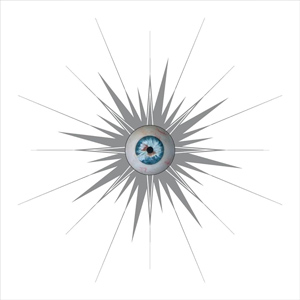
Homenaje A Remedios Varo is the fourth album by John Zorn’s Incerto quartet.
Homenaje A Remedios Varo is the third release in 2023 by the acoustic Incerto quartet, founded by Zorn in 2022, following Multiplicities II: A Repository Of Non-Existent Objects and Full Fathom Five.
Incerto features Julian Lage (guitar), Brian Marsella (piano), Jorge Roeder (double bass) and Ches Smith (drums). Zorn himself is responsible for composing, producing and leading the band in the studio. Maybe he’ll also be conducting on the road? I don’t know.
Homenaje A Remedios Varo is Zorn’s tribute to the Spanish-Mexican surrealist painter Remedios Varo (1908-1963). The stylistic differences with the quartet’s previous albums are not great. Multiplicities II, in particular, feels like a direct sister album. Homenaje is a little more upbeat music, though, and Marsella’s piano is a little more prominent this time at the expense of Lage’s guitar.
Homenaje A Remedios Varo is also acoustic jazz (Lage’s guitar is amplified, but it sounds very bright and clean in jazz style), defined by lush and virtuosic piano rolls and Lage’s agile guitar playing. From lyrical piano flourishes, there’s an occasional zornishly surprising shift to tighter ensemble riffing. Sometimes the upbeat album also offers beautiful and delicate melodies, the best example of which is the fine closing track ”Patience”.
Guitarist Lage and pianist Marsella are the stars of the album, but bassist Roeder and drummer Smith are also excellent musicians. The rhythm section plays tight but with an eloquent agility. The whole quartet is very tight and dynamic.
The open and natural recording captures everything deliciously, down to the smallest detail.
Homenaje A Remedios Varo may not be a particularly significant or memorable Zorn album, but it’s still a damn pleasant listen.
Best songs: ”Blue Equinox”, ”The Week with Nine Mondays”, ”Patience”
12. Gong : Unending Ascending
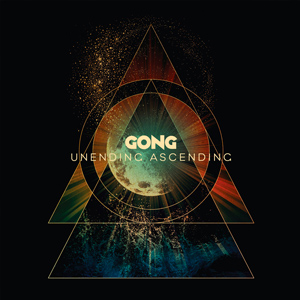
Unending Ascending is the third Gong album since the death of Daevid Allen.
Before his death, Allen chose guitarist/vocalist Kavus Torabi as his successor. Torabi has been leading the band quite successfully since 2016. Torabi’s leadership is also supported by the fact that the line-up has also remained very much intact since I See You. Orlando Allen (son of David), who only played drums on that album, has been replaced by Cheb Nettles. Otherwise, the basic quartet has remained the same, with Fabio Golfetti on guitar alongside Torab, Ian East on winds and Dave Sturt on bass. The quartet has shown an uncommon resilience even by Gong standards, with over 50 musicians in the band’s history and no line-up having stayed the same for so long before.
Previous Gong album The Universe Also Collapses (2019) offered long songs, but this time Torabi and co. have condensed their expression. The 40-minute album, which respects vinyl dimensions, contains no fewer than eight tracks, only two of which exceed the six-minute mark. The solution seems a little dubious at first; after all, the Gong mentality has often involved a certain acidic floating and blurring of the time line, aided by the breaking of normal pop/rock scales. The end result works, however, as the songs seem to form a very natural series of songs. Although there are clearly eight separate songs, they are linked together so smoothly that you almost feel like you are listening to one 40 minute epic. The individual songs support each other nicely.
The Universe Also Collapses was quite a ferocious album. Unending Ascending sounds softer and more wistful, although it also contains a few really rocking tracks. The gentleness is accentuated by East’s increased use of woodwinds. The new backing vocalist also adds to the softness. I was hoping for a bit more of a feminine touch when I was listening to the last Gong album. And now Torabi and co. have delivered. Indeed, the ethereal vocals of Saskia Maxwell, who also sang in the Ozric Tentacles, provide a nice little contrast to Torabi’s vocals. More Maxwell could have been used as the weakest link in contemporary Gong is still Torabi’s vocals. However, Torabi is getting better from album to album. He’s still not a singing star, but I feel he sings better than ever on Unending Ascending. The vocal melodies still need some work. In that department, the album offers nothing very memorable.
As my wishes seem to be coming true, I would next like to see Torabi and company add some marimba and vibraphone to the band’s sound! This would also bring in a hint of Pierre Moerlen’s heritage and also brighten up the rather dark sound of the current Gong.
I wrote earlier that the songs on Unending Ascending form a mutually supportive whole. However, there are a few tracks that stand out.
The album’s highlights are the powerful rock song ”My Guitar Is a Spaceship” which features tricky chunky rhythms and a twisting saxophone riff, and the downright furious ”Choose Your Goddess” which represents the album’s most complex offering and features truly addictive riffs, irregular time signatures, striking staccato rhythms and an intricate, dirty, rattling saxophone solo.
”Ship Of Ishtar”, which represents the most atmospheric part of the album, also stands out. It dares to leave aside the crunching riffs for no less than eight minutes as the song floats along in a psychedelic ethereal mood, driven by glissando guitars, flickering synths and gentle wind instruments.
Unending Ascending is certainly not as groundbreaking or anarchistically joyful music as Gong’s best albums from the 70s, but it’s still a delightfully high quality continuation of the band’s story. There are numerous bands from the 60s/70s touring and recording around the world that no longer have any of the original members left. Of these dinosaurs that have completely shed their skins, Gong, led by Torab, is by far the most impressive.
Best tracks: ”My Guitar Is a Spaceship”, ”All Clocks Reset”, ”Choose Your Goddess”
****
13. Porcupine Tree : Closure/Continuation.Live. Amsterdam 07/11/22
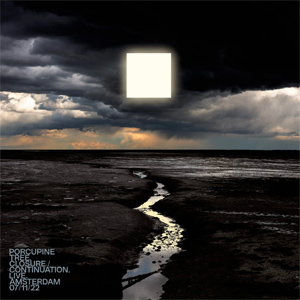
Porcupine Tree made a comeback in 2022 after a long break. Led by Steven Wilson, Closure/Continuation was Porcupine Tree’s first release in 13 years. And most gratifyingly, the album was excellent.
Of course, the return was also celebrated with a tour. With Closure/Continuation, Porcupine Tree was reduced to a trio. Bassist Colin Edwin was no longer invited to the party and Wilson was joined on the album by drummer Gavin Harrison and keyboardist Richard Barbieri. At least the band didn’t venture out on tour as a trio, but hired Randy McStine (guitar) and Dave Navarro (bass guitar) as back-up. Both very talented musicians.
Porcupine Tree has released a large number of live albums. The most notable of these to date have been 1997’s Coma Divine and 2011’s Anesthetize. The former gives a great insight into the hazier prog sound of the band’s early days, while the latter perfectly encapsulates the band’s most successful period with its metal influences. The blandly titled Closure/Continuation.Live. Amsterdam 07/11/22 updates the band’s story to the present day.
Closure/Continuation.Live. serves up a hefty set. The album was recorded on 7 November 2022 in Amsterdam in front of an audience of 17,000 people, and the music lasts a full two and a half hours.
The Closure/Continuation album is played in its entirety, proving that Wilson and company have not given in to being a nostalgia machine since their return. And what the heck, those songs also work perfectly well live.
The songs from Fear Of Blank Planet play the second most important role, as the music from that album, including the 17-minute epic ”Anesthetize”, lasts 45 minutes.
Four songs from In Absentia and one song each from Stupid Dream, Lightbulb Sun, Deadwing and The Incident. From the Recordings compilation of rare tracks, the excellent ”Buying New Soul” is played. This track is perhaps the most surprising choice of the set, although ”Last Chance to Evacuate Planet Earth Before It Is Recycled” is also not the most obvious track to play. The beautiful ”Collapse The Light Into Earth” is not overly cultivated on live records either so it can also be considered a nice little surprise.
Closure/Continuation.Live. doesn’t offer any particularly exotic new arrangements, but here and there you can hear some nice new details (some intros get longer, for example ”Fear Of A Blank Planet” grows to 9 minutes, mainly due to the longer intro). Barbier’s keyboards, in particular, seem to get a welcome boost here and there. The five-piece band plays with energy. And while I liked Wilson’s bass on Closure/Continuation, it’s interesting to hear the more nimble fingered Navarro interpreting those songs.
Wilson himself handles the vocal side of things mostly convincingly, having developed quite a bit as a vocalist over the last ten years. Towards the end, though, there is a noticeable hint of fatigue and harshness here and there in his voice. But hey, that’s life! This fact really only serves to underline the fact that this is a more or less unadulterated, genuine live album.
The sounds are, as you might expect from Wilson, excellent (be sure to turn the volume knob well to the southeast, this album allows it). The CD versions of the originals In Absentia and Fear Of A Blank Planet sound disturbingly compressed, and it’s a pleasure to hear material from these albums with a more airy and dynamic sound. The sound is also more loose and the ”prog-metal” feel of that era is less evident on this live.
Closure/Continuation.Live. may not quite match the Coma Divine and Anesthetize albums I mentioned at the beginning, but it’s a good addition to the band’s army of live albums, if only because of the excellent songs on the latest studio album.
Closure/Continuation.Live. is an impressive affair from start to finish and offers a very successful glimpse of life after In Absentia. After Closure/Continuation.Live., the future of Porcupine Tree is again in doubt, but at least based on this concert recording, the continuation will not depend on a lack of live energy.
(Closure/Continuation.Live. is also available as video on DVD/BD formats.)
Best tracks: ”Harridan”, ”Last Chance to Evacuate Planet Earth Before It Is Recycled”, ”Chimera’s Wreck”, ”Buying New Soul”, ”Walk The Plank”, ”Herd Culling”
****

14. Haralabos [Harry] Stafylakis: Calibrating Friction
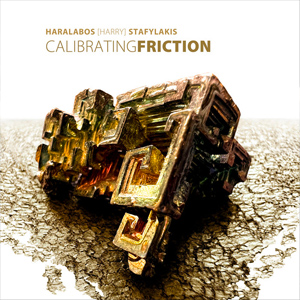
Calibrating Friction is Haralabos [Harry] Stafylakis’ first solo album.
Born in Montreal but currently based in New York, Stafylakis (b. 1982) is a classically trained composer and guitarist. Since 2016, Stafylakis has been composer-in-residence with the Winnipeg Symphony Orchestra. On the rock side, he has collaborated with Animals As Leaders and Bent Knee, among others.
Stafylakis creates great drama from a chamber orchestra amplified with rock instruments. Or let’s say that in the background there is a small and varied number of classically trained musicians who form the chamber ensemble required for each song. The instruments include a variety of flutes, violins, double basses, bassoons, French horns, trombones, cello, clarinets, pianos and various percussion instruments. Perhaps the most famous of the classical musicians is pianist Vicky Chow, who has worked with Philip Glass and Steve Reich, among others.
Calibrating Friction is sold as a combination of symphonic classical music and prog metal. For me, that definition makes me think of Nightwish and similar abominations, but in fact Calibrating Friction sounds more like modern art music, which happens to include electric guitars and a drum kit in its instrumentation. I think avant-proge is a more apt definition of the album than prog-metal, but certainly not as marketable! But I don’t notice much prog-metal on the album itself. The low, growling eight-string electric guitar might hint at it to some extent, but the double bass drum rolls typical of that genre are hardly audible.
Calibrating Friction also doesn’t offer much in the way of fast and long solos that are an integral part of prog metal. It’s more about tight ensemble playing and here Calibrating Friction is a bit like a math rock. On the other hand, Stafylakis has managed to inject some groove into the music that math rock can easily miss. Of course, there are some small solo breaks here and there and they are pleasantly shared between electric guitar, violin and piano. Instrumentation is used in a versatile way as well. The riffy parts (or ostinatos) are not always given only to the electric guitar, but sometimes they are also sawed by violins and maybe later enhanced by guitar.
The compositions have a delightful dynamism. From clean, complex riffing, there is a natural transition to quieter passages that can be either ethereally avant-garde or lyrically beautiful. Stafylakis thus allows the ears to rest for a while after which the return to the rumble feels more intense and interesting.
The combination of rock instruments and chamber music put together by Stafylakis is a rather peculiar sounding concoction. Oscillospira, a joint album by JG Thirlwell and Simon Steensland from a few years ago, comes to mind as something of a stylistic comparator.
Stylistically, the five long (9-12 min) tracks are a bit too similar and the kind of mind-blowing composition is still missing. However, Calibrating Friction is a strong entry from Stafylakis in the field of rock and art music and hopefully more is in store. The next album could prove to be a smash hit.
Best tracks: ”Flows Obsidian”, ”Of Beauty / Of Brutality”
****
15. John Zorn: Parrhesiastes

Parrhesiastes is the fifth studio album by Chaos Magick, led by John Zorn.
John Zorn, who is releasing a huge amount of new music in 2023 (if I’ve kept count, Zorn has released 11 studio albums during the year) has mostly stuck to a rather light acoustic jazz sound, but Parrhesiastes proves that the maestro is still able to express himself in a more raucous way.
Formed in 2021, Chaos Magick consists of two keyboard players, an electric guitarist and a drummer. John Medeski on organ, Brian Marsella on electric piano, Matt Hollenberg on guitar and Kenny Grohowski on drums. Zorn himself is therefore the only composer in this band.
Zorn has composed a lot of short songs lately, but Parrhesiastes consists of three 10-14 minute long songs. The songs uninhibitedly mix organ-jazz, funk, extreme metal and many other genres.
Parrhesiastes is an eclectic listening experience. From gently wafting organ ostinatoes, the music moves smoothly (well, sometimes also less smoothly, apparently on purpose!) through the gentle electric piano licks to low thundering electric guitar riffs, and from the misty, sultry funk/jazz moods it’s a short distance to edgy prog work-outs, from which you can jump to metal riffs in no time at all. I have to say, though, that the trio is better suited to A Tribute To Jack Johnson-style Miles Davis electric jazz than extreme metal. In fact, the heavy parts of the album don’t go quite as far as they could. Having said that, I have to admit that some of Hollenberg’s metallic electric guitar riffs are really tasty to listen to, especially when the Medeski organ or Marsella’s overdriven electric piano is playing in the background.
Parrhesiastes’ songs are in constant motion and seem to paradoxically move forward in a way that is at once natural and at the same time devoid of reason. It is very difficult to tell from the music where the composition ends and the improvisation begins. And that’s good!
Zorn’s albums are usually recorded to a very high standard, so it’s a bit surprising that Parrhesiastes sounds rather shoddy. On the other hand, in a strange way, this perhaps brings some warmth and humanity to music that can’t be considered very emotional. The downside is that the soundscape, which sounds like a soundtrack recorded through a wool sock, robs the music of some of its edge and punch.
Parrhesiastes is an intriguing album that doesn’t quite live up to the potential of its concept. I think that live this material could take off in a really great way.
Best tracks: ”Form, Object, And Desire”, ”Form, Object, and Desire”
****
16. John Zorn : New Masada Quartet, Vol. 2
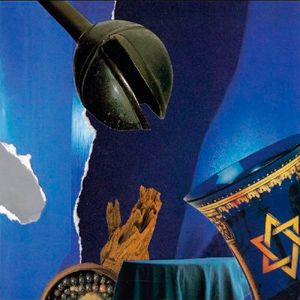
New Masada Quartet, Vol. 2 is the second studio album by the New Masada Quartet led by John Zorn.
”Masada” is Zorn’s concept that combines Jewish compositions, klezmer music and free improvisation. The Masada project was born in 1993 and led to numerous albums released in the late 1990s and early 2000s. The project’s core line-up included Zorn on saxophone, Dave Douglas on trumpet, Greg Cohen on bass and Joey Baron on drums.
The original Masada quartet has long since ceased to exist, but Zorn’s Masada concept lives on in numerous sub-projects, most famously the massive Book Of Angels series and the furious Electic Masada band.
The most recent of Zorn’s Masada projects, as I understand it, is the New Masada Quartet, which released its first album in 2021. The New Masada Quartet features Zorn himself, as well as guitarist Julian Lage, who plays in many of his other projects, and bassist Jorge Roeder and drummer Kenny Wollesen.
New Masada Quartet, Vol. 2 was recorded and mixed in New York in one day and the quartet was still able to perform the same material in concert that evening.
The album opens with Zorn’s screeching (I have to admit that this could even be considered a Zorn cliché…) saxophone, but overall the style is not nearly as violent as, say, the 1990 seminal album Naked City. On the other hand, New Masada Quartet, Vol. 2 sounds much sharper than many of Zorn’s other 2023 albums (yep… Zorn has released a dozen studio albums in 2023!).
Infused with light melancholic klezmer tones, the avant-garde jazz sounds at times languidly sympathetic, even seductively enigmatic. But listeners should not be lulled into a sense of security, for Zorn’s saxophone strikes sharply when you least expect it. And although Lage plays his guitar with a very clean sound, there is a nice amount of friction in his playing from time to time. And speed!
Although Zorn, who recently turned 70, seems to be more of a composer than an instrumentalist these days, New Masada Quartet, Vol. 2 proves that the man still has plenty of energy as a saxophonist.
New Masada Quartet, Vol. 2 is vibrant and upbeat avant-garde jazz that will definitely not bore you.
Best tracks: “Katzatz”, ”Idalah Abal”, ”Abidan”, ”Ashnah”
****
17. John Greaves & Annie Barbazza : Earthly Powers
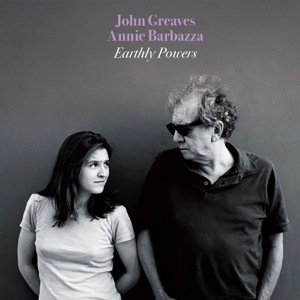
Earthly Powers is John Greaves’ fourth live album.
Multi-instrumentalist John Greaves (b.1950), who started his career in the avant-prog band Henry Cow, went on to become a kind of art-rock singer-songwriter. Greaves is at home with carefully arranged, complex art rock, but he is equally at home with simpler, more emotional ballads.
Greaves is an artist who clearly enjoys recycling and varying his own material. Almost every one of his studio albums features a reinterpretation of one of his older songs. Even one of Greaves’ strongest albums, Songs (1994), is based entirely on such reworking.
Of course, concerts and the recordings they make are a form of reinterpretation that is practiced by almost every artist. But Greaves takes this aspect a step further than usual. Indeed, Greaves has performed his music with very varied line-ups, which of course directly changes the form of the music through arrangements. With Earthly Powers, Greaves has now bent his music into a fully acoustic duet format.
On Earthly Powers, Greaves is paired with young Italian singer/songwriter Annie Barbazza (b.1993).Greaves and Barbazza have toured extensively together in recent years, and as a duo also provided vocals on the North Sea Radio Orchestra’s fine Robert Wyatt tribute album Folly Bololey: Songs From Robert Wyatt’s Rock Bottom (2019). Greaves also appeared on Barbazza’s solo album Vive (2020).
The main accompanying instrument is Greaves’ skilful and rhythmic piano, backed by Barbassa’s acoustic guitar. The main focus, however, is on the duo’s vocals. 73-year-old Greaves’ voice has aged elegantly. There’s a little brittleness here and there, but for the most part he sings powerfully, hitting the notes where they need to be. Barbazza’s intense and wide-ranging vocals support Greaves nicely. And far from being a second vocalist, Barbazza is given plenty of solo moments. Despite the limited instrumentation, Earthly Powers manages to go through a wide range of moods. Some of the performances are delicately beautiful, but others are very intense.
The 19-song Earthly Powers consists mainly of Greaves’ compositions (many with lyrics by Peter Blegvad), but also includes a few covers by Matching Mole (good old ”God Song”), Bob Dylan and Leonard Cohen. There are also a few Barbazza compositions.
Earthly Powers is a strong testament to Greaves’ songwriting skills and a reminder that his music works not only in intricate arrangements but also in a simple duo format.
Best tracks: ”Bad Alchemy”. ”Swelling Valley”, ”22 Proverbs”, ”Kew Rhone”, ”Walking on Eggshells”
****
18. The Mercury Tree: Self Similar
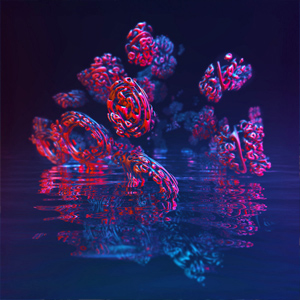
Self Similar is the seventh studio album by The Mercury Tree.
The Mercury Tree, the little-known American band formed in 2007, has already quietly released seven distinctive studio albums.
The most distinctive aspect of The Mercury Tree’s music is the microtonality that the band nowadays uses in all their songs. The semitone scale used in Western music is divided into 12 equal or half-step chromatic scales. However, The Mercury Tree, with its special tunings, is able to move between these half-steps in its music. This results in a slightly off-kilter atmosphere. It’s as if everything is a bit skewed or out of sync. So in a way, using microtonality is to harmony what irregular time signatures are to rhythm. Both keep the listener on their toes and offer something not usually heard in mainstream music.
The Mercury Tree is a trio formed by Ben Spees (vocals, guitars, keyboards), Connor Reilly (drums) and Oliver Campbell (bass guitar, vocals), but with Self Similar they are joined by a few other musicians. Perhaps most importantly, Damon Waitkus from Jack O’ The Clock plays (including acoustic guitar and hammered dulcimer) and sings on a couple of songs. In recent years, Waitkus has been exploring microtonal music with Ventifacts, the band he co-founded with Spees. Other guests include Nick Prol (vocals) from The Proletarians, Tom Shad (piccolo bass) and Deja Indigo Yerger (electric guitar).
Self Similar’s music is intense and the arrangements are dense. There is a lot going on all the time. Despite its microtonality, the album is by no means particularly difficult to listen to, and Spees’ fine vocal parts in particular provide accessible hooks and a catchy surface. The guitar riffs the band serves up are also often quite impressive to listen to.
All in all, Self Similar is an interesting combination of relatively heavy progressive rock, math rock and post-rock. The pulsating, cyclical arpeggios that can be heard are sometimes remotely reminiscent of 80s King Crimson, but on the other hand, the strong melodic touch combined with a modern, aggressive sound is also a bit similar to Porcupine Tree. However, I would like to emphasise that at no point does The Mercury Tree sound like an imitation of the above-mentioned bands, but the result is very distinctive.
Self Similar’s small weakness is that the songs are a little too similar to each other. Many of the songs could benefit from softer, more serene sections to contrast the otherwise rather brash feel. Waitkus’ acoustic instruments do bring some much needed variety to a few songs.
My knowledge of The Mercury Tree is still rather superficial, but it seems that with Self Similar the band has managed to create the strongest album of their career so far.
Best tracks: ”Grown Apart”, ”Similar Self”, ”Recursed Images”. “Dark Triad”
****
19. Sonar: Three Movements
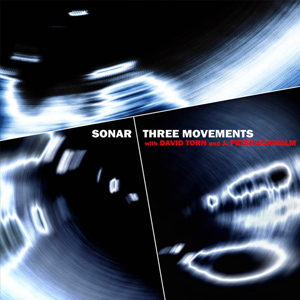
Three Movements is Sonar’s seventh studio album.
Sonar is a Swiss quartet led by guitarist Stephan Thelen. The other members of the band are bassist Christian Kuntner, drummer Manuel Pasquinelli and second guitarist Bernhard Wagner. With Three Movements, the band is again joined by an already regular outside member, American avant-garde guitarist David Torn. A new addition to the album is J. Peter Schwalm, credited with ”electronica”.
Three Movements is probably Sonar’s most ambitious album to date. As the title suggests, it consists of three long 11-16 minute compositions by Thelen that make up a total of just over 40 minutes. Taking inspiration from symphonic music, the first movement is fast, the middle one slow and the last one fast. This is of course a strong simplification, as there are of course tempo changes within the movements. In the third movement, Schwalm’s electronics and sequences take on a greater role, bringing with them a slightly new sound.
Thelen’s compositions are again of a familiar mathematical nature. Polyrhythms play a central role, with sections of different instruments clicking around each other in various irregular time signatures, swirling and at times rhythmically locking together.
The music has a greater sense of forward movement than before. In particular, ’First Movement’ surges forward in a convincing and inevitable way. The visual image that the music conjures up for me is of a huge dim industrial hall with big metal cogs turning. All seemingly disconnected from each other and moving at their own pace. At moments, however, the spinning of the cogs hits synchronicity and they spin again on their own trajectory. These cogs are, of course, Sonar’s polyrhythmically clicking quartet. Between the shrieking cogs, wildly bright sparks fly wildly. Between the mechanical and mathematical music, the sparks are, of course, the wildly resonant guitar of Torn.
Three Movements, mixed by Markus Reuter and Benjamin Schäfer, sounds more balanced than recent Sonar albums where the bass has sometimes been very prominent. On the other hand, as pleasant as Three Movements sounds, Torn’s wilder mixes brought a kind of energy to the music that is sometimes lacking.
Three Movements is by no means a huge departure for Sonar, but the wider-arching thinking brought to the music brings a welcome new drama to the whole.
Best tracks: ”First Movement”, ”Third Movement”Sonar: Three Movements
****
20. John Zorn: The Fourth Way
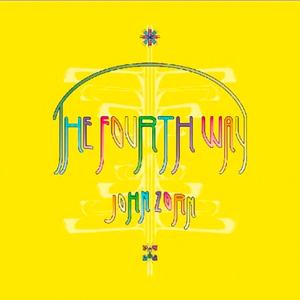
The Fourth Way features music composed by John Zorn for acoustic jazz trio.
Compositions inspired by the mystic Georges Gurdjieff are interpreted by the stunning acoustic trio of Brian Marsella (piano), Ches Smith (drums) and Jorge Roeder (bass) who are also familiar from many other Zorn albums.
The album contains one 23-minute epic and five shorter tracks. Zorn has released a large amount of acoustic music in 2023. The Fourth Way is the most furious and avant-garde of these acoustic albums. The whole trio plays superbly, but Roeder deserves a special mention. He handles his double bass with inspired versatility.
The Fourth Way’s music is energetic and at times riotous, but on the other hand it also sometimes moves in very traditional lyrically beautiful moods. This clash results in interesting and engaging music, even if The Fourth Way is by no means a particularly groundbreaking or innovative album.
Best tracks: “Meetings With Remarkable Men”, “Sacred Steps”
****
Author: JANNE YLIRUUSI
Read more about the 2023 albums:
Read more reviews here

Kiitos, Janne! Thank you so much for including my album Calibrating Friction on your best albums of 2023 list, it is an honor and your support of experimental music is greatly appreciated! We’ll be sure to include a longer guitar solo next time \m/
—Haralabos [Harry] Stafylakis
TykkääLiked by 1 henkilö
Oh no I don’t crave for longer guitar solos! On the contrary! However long bassoon solos… yes please. 🙂
Thanks for your words and especially thanks for your music!
TykkääTykkää